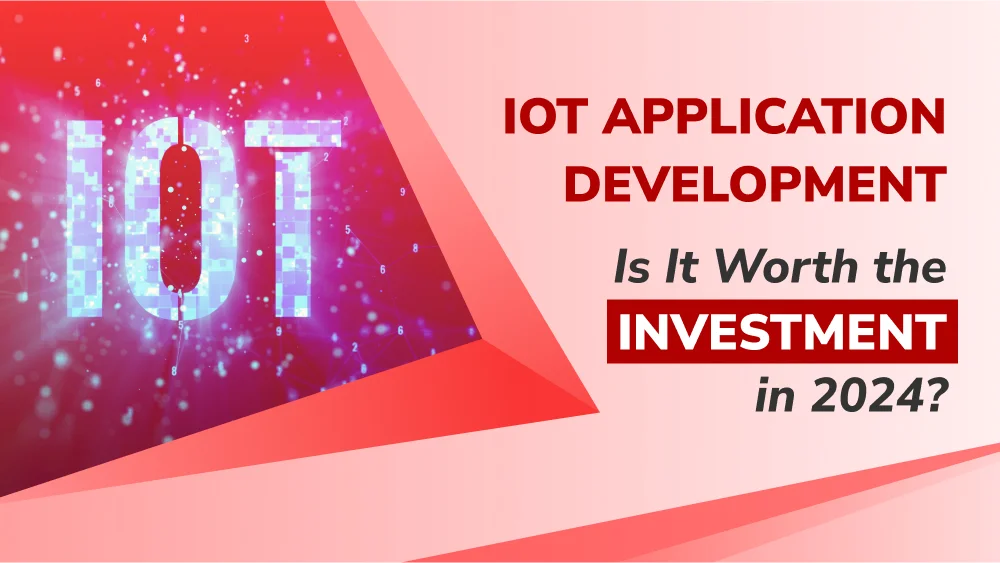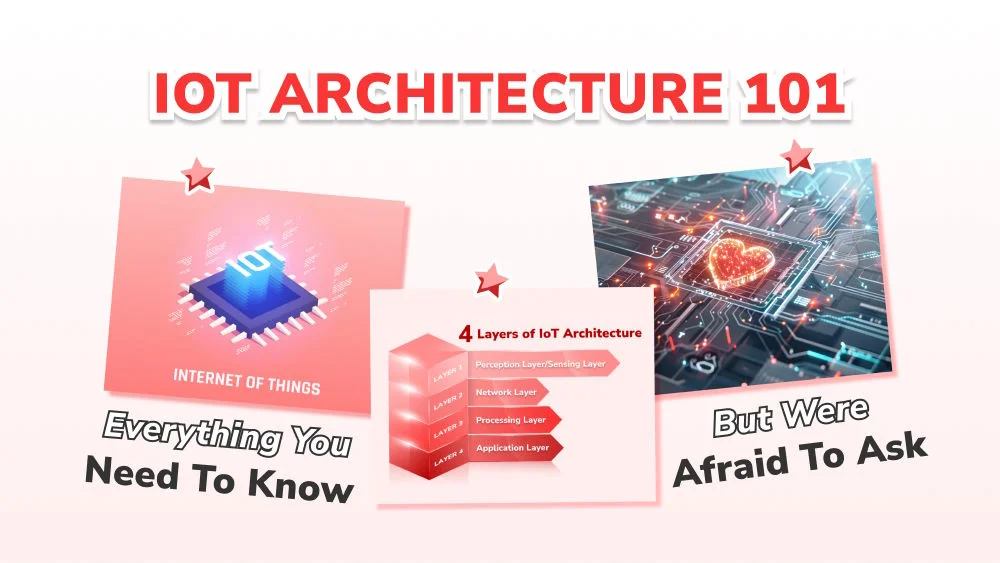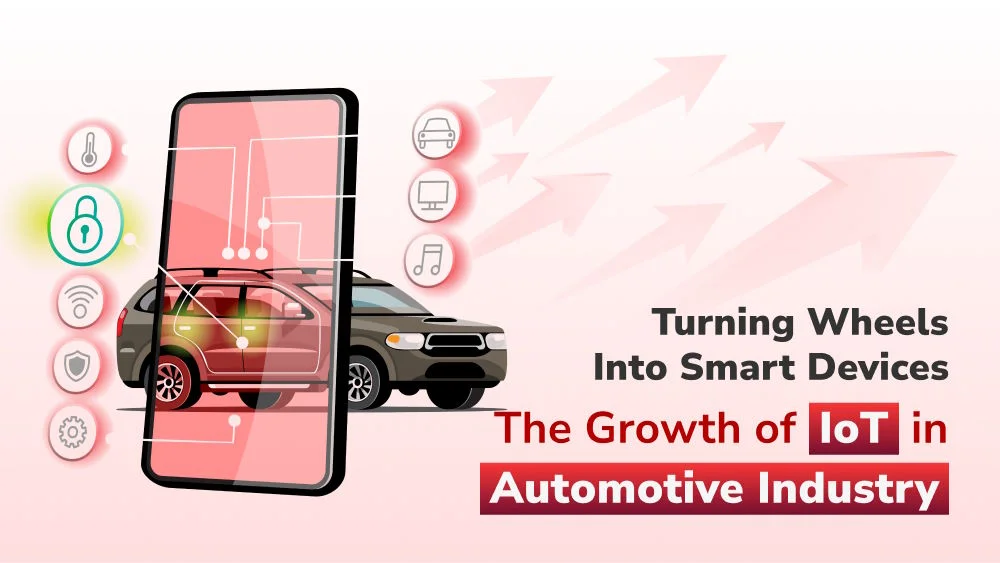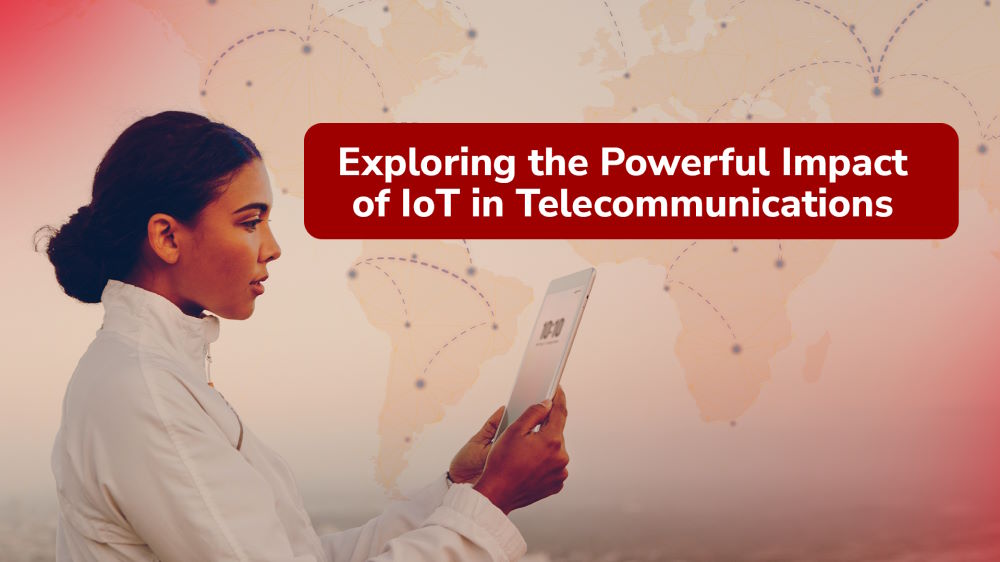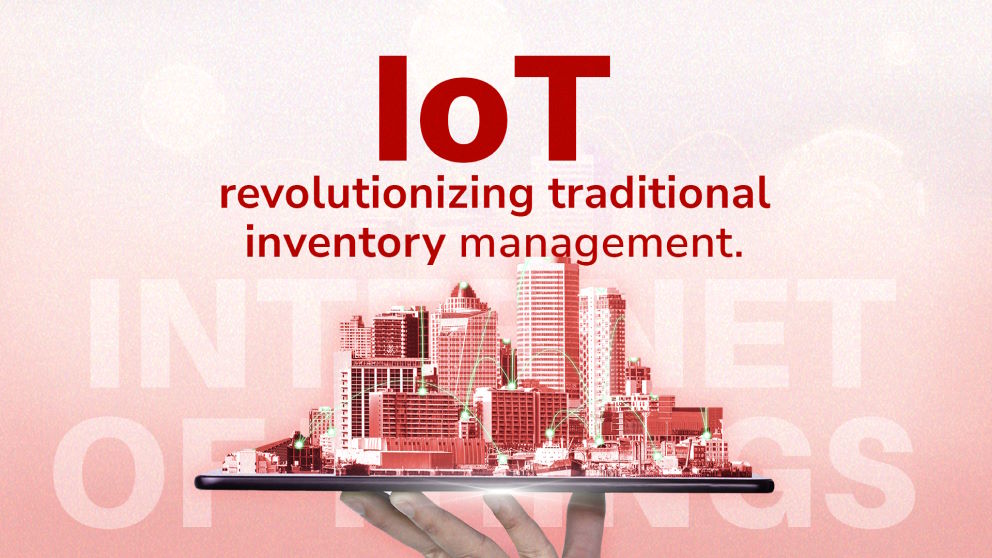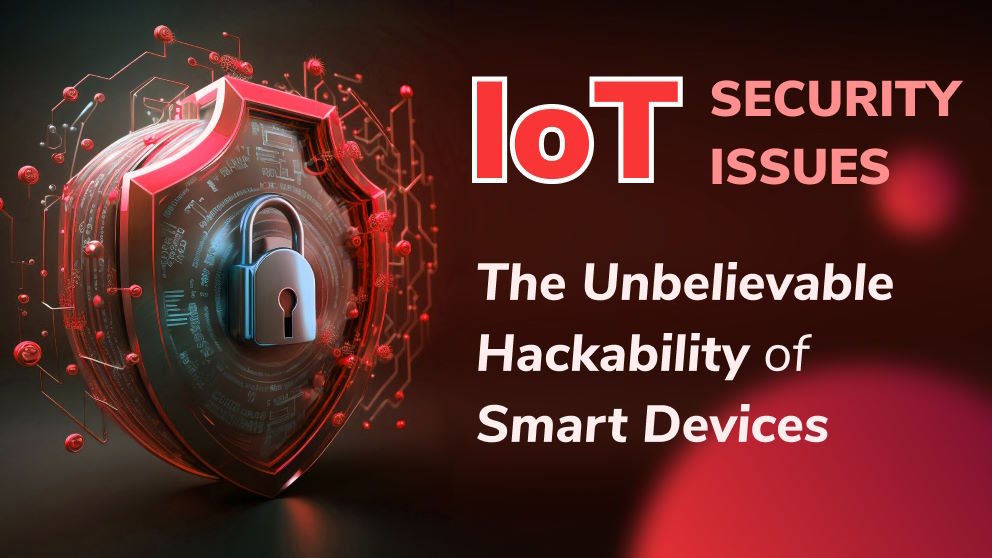Five Best IoT Development Frameworks for Businesses to Enhance Their Smart Capabilities
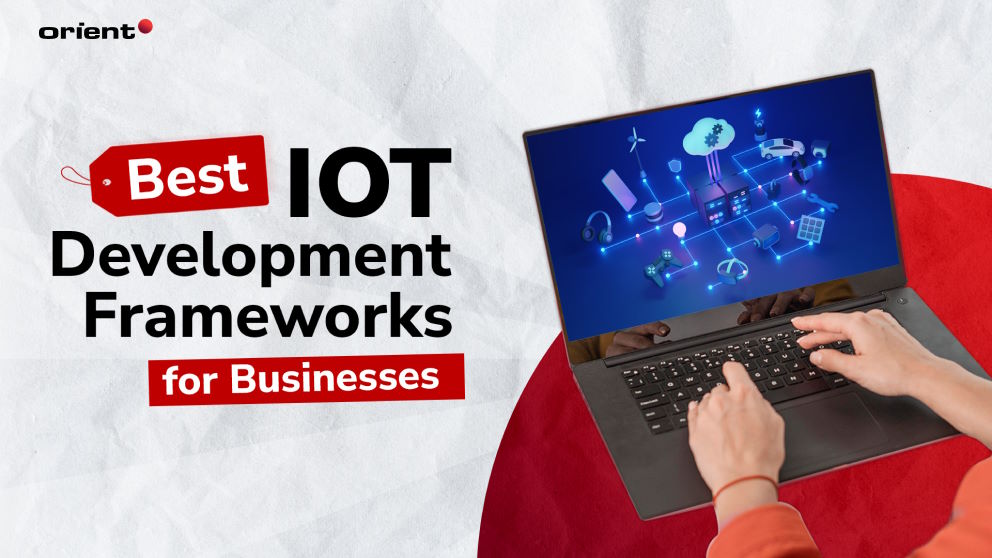
Content Map
More chaptersThe Internet of Things (IoT) is a network of web-enabled devices that wirelessly collect and share data with other devices over the Internet without human intervention. When equipped with the right technology – e.g., wireless network connectivity, sensors, GPS receivers, cameras, microphones, radar – almost any electronic device can be converted into a “smart” device. Examples of this include camera-equipped fridges that let you see inside without opening the door, wearable medical devices that monitor a patient’s vital signs (and automatically alert staff to critical events), and sensors that notify fleet managers of potential vehicle issues.
In order to operate safely, securely, and correctly, IoT networks need a framework that defines how each moving part will work together to help the network achieve its desired outcomes. This is best achieved with an IoT development framework, a combination of cloud-based and desktop services – e.g., software libraries, Application Programming Interfaces (APIs), and development platforms – that define how IoT devices connect to the Internet, how data is collected, analyzed, and distributed, and how end users interact with and interpret the data that they receive.
Premium and Open-source IoT Frameworks
There are many IoT development frameworks to choose from, which include premium options like Amazon Web Services (AWS) IoT and Microsoft .NET, through to open-source options like Zetta and ThingSpeak. These are paid cloud-based and desktop services that provide everything you need to develop, deploy, and manage your IoT devices and infrastructure. For example, there are device services to help you connect your devices and operate them from the edge, connectivity, and control services to help you secure, control, and manage your devices in the cloud, and analytics services to help you quickly collect, analyze, and distribute your IoT data.
Of course, there are pros and cons to each service provider, and you have to consider the differences between premium and open-source options. Premium options tend to be pretty easy to set up, offer great support, and have guaranteed uptimes; open-source options tend to be more flexible, less confined to one vendor, but more difficult to set up. The right option for you will depend on your unique circumstances, the budget and resources available to you, and the outcomes you hope to achieve.
5 Recommended IoT Development Frameworks
Here is a list of some of the most popular IoT development frameworks you can use today. This list of frameworks, which includes both proprietary IoT frameworks and open-source IoT frameworks, will help you better understand the unique advances of each one and their ideal use-case scenarios.
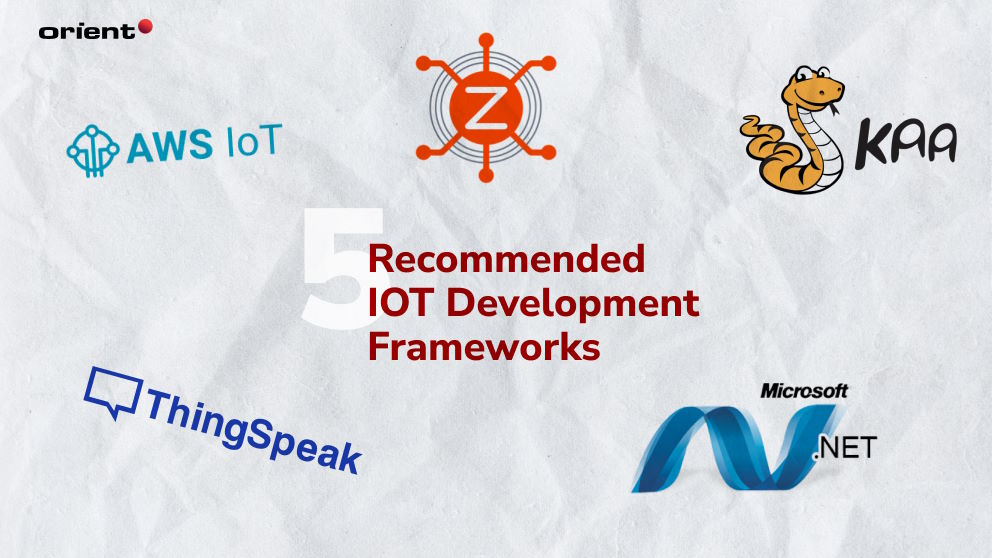
Amazon Web Services (AWS) IoT
AWS IoT Core is one of many proprietary IoT frameworks that provide a range of services to help users set up, deploy, and manage their IoT solutions.
These services are split up into three separate categories: Device software, connectivity and control services, and analytics services. IoT device software helps users connect and manage their connected devices from the edge, connectivity, and control services help users secure, control, and manage their devices from the cloud, and analytics services help users work with and gain valuable insights from their IoT and big data quickly.
Users can add as many of these services as they wish and manage them all from the AWS Management Console. AWS IoT also features a unique feature called the Rules Engine, which enables users to continuously receive, filter, analyze, and direct their raw data to multiple sources.
Kaa IoT
Kaa IoT is an open-source framework with flexible services to help users set up their IoT infrastructure. These include services related to device connectivity and management, data collection, data processing and analytics, data visualization, alerts and notifications, configuration management, and more.
One of the great things about being open source is that users can customize their existing Kaa features, add new features, and replace their existing Kaa features with select third-party ones. This is because Kaa is built on a flexible microservices architecture, where each service is designed to perform a specific function, and each service can be customized to meet each user’s unique requirements.
Zetta
Zetta is an open-source platform that allows users to build Application Programming Interfaces (APIs) for an IoT system. The platform is free to use but does require knowledge of Node.js (a programming language that Orient Software is familiar with) as that is the programming language it is built on. With Zetta, users can define their IoT devices as state machines, which means that those devices will remember their current state and respond to user inputs according to a specific state.
This is beneficial for IoT devices, as there are often situations where IoT devices need to respond accordingly to different user inputs and situations, such as a sensor on a vehicle that needs to alert a fleet manager to an engine fault. Users can also use Zetta to expose WebSocket endpoints, which allows the user to transmit information in real time between a web browser and a server.
Microsoft .Net
Microsoft .NET is an open-source IoT platform for building, testing, and deploying cloud platform applications as well as applications for IoT purposes. It enables users to build applications in C# and .NET that run effortlessly on different single-board computers such as Raspberry Pi, HummingBoard, and Pine A64, to name a few. .NET also features a wide range of libraries, which developers can use to quickly build IoT applications that work flawlessly with proprietary and third-party IoT devices such as sensors, gateways, input devices, and displays.
Once users have built and deployed their IoT applications, they can then connect, monitor, and manage their IoT devices on the Microsoft Azure IoT Suite, a centralized dashboard that allows for real-time, bi-directional communication between browser and server.
Thingspeak
ThingSpeak is an open-source platform that enables users to build applications that relate to the data collected by their physical sensors. This gives users the ability to build applications that assist with tasks such as real-time data collection, data visualization, and data processing.
One of the main features of ThingSpeak is the ThingSpeak Channel, a series of proprietary channels that allow users to decide where they send and store their data. Each channel includes up to 8 fields for all data types, along with a status field and 3 location fields. Users can then distribute their data to a desired channel, process that data, and retrieve that data at any time. This makes ThingSpeak a great solution for IoT network owners who wish to keep their collected data safe and secure.
What to Look for in an IoT Development Framework
There are many things to look for in an IoT framework, and what may be crucial to you may be totally irrelevant to another. That said, there are certain qualities that, regardless of what IoT framework you need, should be present in your chosen solution.
Future Proof
Choose an IoT framework that will help add long-term value to your business. This means choosing a framework that is most certainly, guaranteed to last for as long as you need it for. The technology industry is full of minor and major players that, if a particular venture is not successful, will eventually discontinue a particular product or service. This is most evident in the IoT industry, where even a company like Google decided to retire its Google Cloud IoT Core service.
Security
Security is one of the most important features of an IoT network. Many IoT devices have the all-important job of collecting, processing and storing all kinds of personal and business-related data: customer records, banking statements, invoices, transactions, and even personal addresses. If such information falls into the wrong hands, then the company responsible for managing the IoT network will be to blame.
For this reason, invest in an IoT framework that includes all the security features you need (e.g., data encryption, minimum password strength requirements, automated security policies) to ensure your IoT data is safe, secure, and out of the hands of internal and external threat actors.
Price
Ensure you fully understand the pricing model of the IoT framework that you intend to work with. Some frameworks charge for their services at a fixed monthly cost, while others charge on a pay-as-you-go basis, where you only pay for the services that you need and for the volume in which you use those services.
Some open-source platforms are entirely free, which may seem enticing at first (and, in many cases, is), but this may come at the cost of developer support.
Flexibility
Choose an IoT framework that will let you scale relatively quickly with minimal effort. This means being able to add, remove, and modify services on the fly without having to jump through multiple hoops in order to get where you want to be. You should have a high level of control over how you want your IoT framework to work.
Why Choose Orient Software for IoT Development Services
At Orient Software, we have developed IoT solutions for global clients who wish to enhance their business with smart capabilities.
Our dedicated IoT experts are highly skilled in developing custom solutions for different communication methods such as Zigbee, Wi-Fi, and Long Range (LoRa) Wireless Communications. This experience enables us to provide IoT solutions that accommodate a wide range of business scenarios, such as being able to develop an IoT device management solution for a cloud service provider.
We can also assist with your large-scale IoT project that requires the use of LoRa over large areas and multiple devices. We can help you expand your business with this communication protocol or solve your current IoT device-control challenges. We can even create solutions that integrate seamlessly with your existing workflow.
For more information about our Internet of Things services, contact us today.

